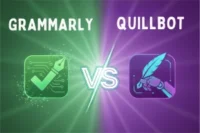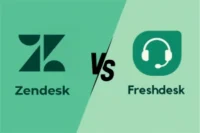Google Maps vs Mapbox: Which Mapping Service is Better?
Published: 16 Feb 2025
Maps have become an essential part of our lives. Whether we’re planning a road trip, finding a nearby café, or tracking a delivery, maps help us navigate the world with ease. Two of the most popular mapping services are Google Maps and Mapbox. Both are powerful tools, but they have unique features that make them different.

In this article, we’ll explore the key differences between Google Maps and Mapbox to help you understand which one might be better for your needs.
What is Google Maps?
Google Maps is a widely used mapping service developed by Google. It’s known for its user-friendly interface, accurate directions, and real-time traffic updates. Millions of people around the world rely on Google Maps for everyday navigation.
What is Mapbox?
Mapbox is a mapping platform designed for developers and businesses. It offers customizable maps and location-based services, making it a popular choice for apps and websites that need unique mapping solutions.
Quick Comparison Table of Google Maps vs Mapbox
Here’s a quick comparison table summarizing the key differences between Google Maps and Mapbox:
| Feature | Google Maps | Mapbox |
| Ease of Use | Simple and user-friendly for everyday use | Designed for developers and businesses |
| Customization | Limited customization options | Highly customizable maps and styles |
| Pricing | Free for basic use; charges for high usage | Flexible pricing based on usage |
| Data Sources | Uses Google’s proprietary data | Relies on open-source data |
| 3D Mapping | Limited 3D features (mostly Street View) | Advanced 3D mapping capabilities |
| Offline Use | Supports offline map downloads | Limited offline functionality |
| Traffic Updates | Real-time traffic updates with high accuracy | Provides real-time traffic data |
| Target Audience | General users | Developers and businesses |
| Integration | Works seamlessly with Google services | Offers APIs for custom app integration |
| Scalability | Suitable for general use | Designed for large-scale applications |
This table provides a clear, at-a-glance comparison to help you decide which mapping service suits your needs best!
Google Maps vs Mapbox: Key Differences Explained in Detail
Let’s compare Google Maps and Mapbox based on different factors to understand which one might be better for you.
1. Ease of Use
Google Maps:
- User-Friendly Interface: Google Maps is designed for everyone, from kids to adults. It’s simple layout makes it easy to search for locations, get directions, and explore nearby places.
- No Technical Knowledge Required: You don’t need to be tech-savvy to use Google Maps. Just type in your destination, and it guides you step-by-step.
- Voice Guidance: It provides voice-guided navigation, which is helpful while driving or walking.
- One-Click Directions: With just one click, you can get directions for driving, walking, cycling, or public transport.
- Popular Landmarks: Google Maps highlights popular landmarks, restaurants, and attractions, making it easy for users to discover new places.
Mapbox:
- Developer-Focused: Mapbox is built for developers and businesses, so it requires technical knowledge to use effectively.
- Custom Integration: Developers can integrate Mapbox into apps and websites, but this requires coding skills.
- Advanced Tools: It offers tools like APIs and SDKs (Software Development Kits) for creating custom maps, which are not beginner-friendly.
- Learning Curve: Beginners may find it challenging to navigate Mapbox’s features without prior experience in coding or map development.
- Target Audience: Mapbox is ideal for businesses or developers who need tailored mapping solutions, not for casual users.
2. Customization
Google Maps:
- Limited Design Options: Google Maps offers a standard map design with minimal customization. You can’t change the colors, styles, or layouts significantly.
- Predefined Features: The features and tools available are fixed, so you can’t add or remove elements like markers or layers.
- Branding Restrictions: You cannot fully customize Google Maps to match your brand’s look and feel.
- Static Maps: While you can embed Google Maps on websites, the customization options for these maps are limited.
- Ease Over Flexibility: Google Maps prioritizes ease of use over customization, making it less flexible for unique projects.
Mapbox:
- Fully Customizable: Mapbox allows you to design maps from scratch, including colors, fonts, and styles, to match your brand or project.
- Custom Markers and Layers: You can add custom markers, layers, and interactive elements to make your maps unique.
- Style Editor: Mapbox provides a Style Editor tool that lets you visually design maps without writing code.
- Tailored for Businesses: It’s perfect for businesses that want maps to reflect their branding or specific needs.
- Open-Source Flexibility: Mapbox’s open-source nature allows for endless customization possibilities.
3. Pricing
Google Maps:
- Free for Basic Use: Google Maps is free for casual users who need directions or location searches.
- Pay-as-You-Go Model: For businesses or apps with high usage, Google Maps charges based on the number of requests or API calls.
- Costly for High Volume: If your app or website has heavy traffic, the costs can add up quickly.
- Limited Free Tier: The free tier has usage limits, and exceeding them can result in additional charges.
- Transparent Pricing: Google provides a clear pricing structure, but it can be expensive for large-scale projects.
Mapbox:
- Flexible Pricing Plans: Mapbox offers pricing based on usage, making it cost-effective for small and large businesses alike.
- Free Tier Available: It provides a free tier with generous limits for startups or small projects.
- Scalable Costs: As your project grows, Mapbox’s pricing scales with your needs, avoiding sudden cost spikes.
- Custom Quotes: For enterprise-level projects, Mapbox offers custom pricing plans tailored to your requirements.
- Budget-Friendly for Developers: Developers often find Mapbox more affordable for custom mapping solutions compared to Google Maps.
4. Data Sources
Google Maps:
- Proprietary Data: Google Maps uses its own data, collected from satellites, street view cars, and user contributions.
- Highly Accurate: The data is constantly updated, ensuring high accuracy for locations, traffic, and directions.
- Global Coverage: Google Maps covers almost every corner of the world, including remote areas.
- Verified Information: Business listings, reviews, and popular places are verified by Google, adding reliability.
- Limited Flexibility: Since the data is proprietary, you can’t modify or add to it for specific needs.

Mapbox:
- Open-Source Data: Mapbox relies on open-source data from projects like OpenStreetMap, which is freely available.
- Flexible and Adaptable: You can edit or add to the data, making it more adaptable for specific projects.
- Community-Driven: The data is contributed by a global community, which can sometimes lead to inconsistencies.
- Requires Verification: Since the data is open-source, you may need to verify its accuracy for critical applications.
- Ideal for Custom Projects: Mapbox’s data flexibility makes it perfect for developers who need tailored mapping solutions.
5. 3D Mapping
Google Maps:
- Street View: Google Maps offers a 3D-like street-level view, allowing you to explore locations virtually.
- Limited 3D Features: While it provides basic 3D views of cities and landmarks, the functionality is limited.
- No Custom 3D Maps: You can’t create or customize 3D maps for specific projects.
- User-Friendly: The 3D features are easy to use and accessible to everyone.
- Focused on Exploration: Google Maps’ 3D features are designed for exploration rather than technical applications.
Mapbox:
- Advanced 3D Capabilities: Mapbox supports advanced 3D mapping, including terrain, buildings, and interactive elements.
- Custom 3D Maps: Developers can create fully customized 3D maps for apps, games, or visualizations.
- Immersive Experiences: Mapbox’s 3D features are ideal for creating immersive and interactive experiences.
- Developer Tools: It provides tools and APIs for building 3D maps, making it a favorite among developers.
- Ideal for Innovation: Mapbox is perfect for projects that require cutting-edge 3D mapping technology.
6. Offline Use
Google Maps:
- Offline Maps: Google Maps allows users to download maps for offline use, which is great for travelers or areas with poor internet.
- Easy to Use: Downloading maps is simple and can be done with just a few taps.
- Limited Features: While offline, some features like real-time traffic updates may not work.
- Storage Space: Downloaded maps take up storage space on your device, which can be a limitation for large areas.
- Reliable for Travel: Offline maps are highly reliable for navigation in remote or unfamiliar locations.
Mapbox:
- Internet-Dependent: Mapbox primarily requires an internet connection for most features, limiting offline functionality.
- Limited Offline Support: While Mapbox offers some offline capabilities, they are not as robust as Google Maps.
- Developer Tools: Developers can implement offline features, but this requires additional coding and effort.
- Not Ideal for Travelers: Mapbox is less suitable for users who need reliable offline navigation.
- Focused on Online Use: Mapbox is designed for online applications, making it better for apps and websites than for offline use.
Which One Should You Choose?
The choice between Google Maps and Mapbox depends on your needs:
- If you’re an everyday user looking for a reliable and easy-to-use mapping tool, Google Maps is the better option.
- If you’re a developer or business looking for customizable and scalable mapping solutions, Mapbox might be the right choice.

Both platforms have their strengths and weaknesses, so it’s important to consider what you need before making a decision.
Conclusion
Both Google Maps and Mapbox are powerful mapping tools, but they serve different purposes. Google Maps is perfect for everyday users who need a reliable and easy-to-use navigation tool. Mapbox is ideal for developers and businesses looking for customizable and scalable mapping solutions.
By understanding their features and differences, you can choose the one that best fits your needs. Whether you’re exploring the world or building an app, these mapping services can help you find your way!
FAQs about Google Maps vs Mapbox
Here are some of the most FAQs about Google Maps vs Mapbox:
Google Maps is designed for general users, while Mapbox is tailored for developers and businesses needing customizable maps.
Yes, Google Maps is free for basic use, but advanced features may require payment.
It depends on your needs. Mapbox is better for customization, while Google Maps is more user-friendly.
Yes, Mapbox provides real-time traffic data, but it may not be as detailed as Google Maps.
Mapbox primarily requires an internet connection, so offline use is limited compared to Google Maps.
Mapbox often offers more flexible pricing plans, making it cost-effective for businesses with specific needs.
Google Maps has limited 3D features, mostly focused on street-level views.
Mapbox uses open-source data, which is generally reliable but may require additional verification for accuracy.
Google Maps has limited customization options compared to Mapbox.
Mapbox is more developer-friendly, offering tools and APIs for creating custom maps.






Good effort, Rim👌❤️💕